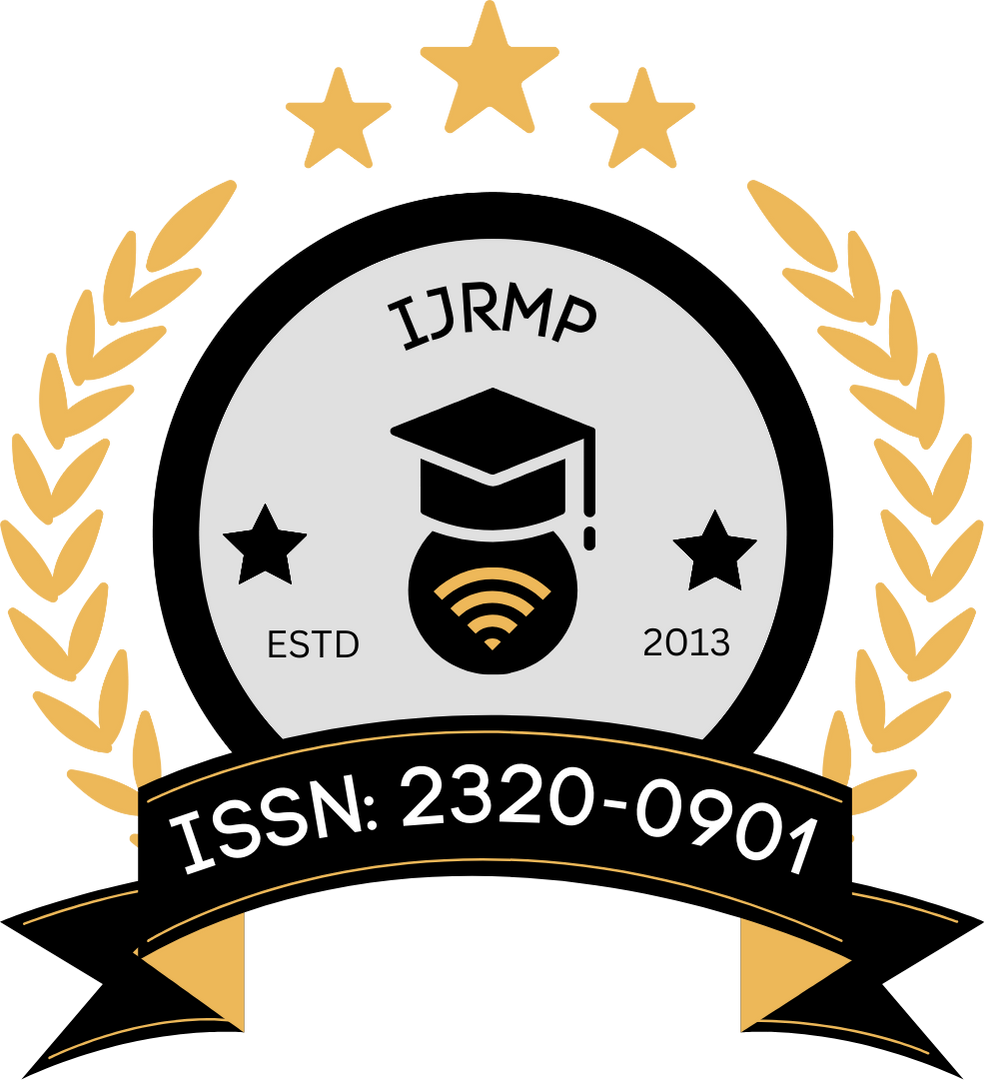![]()
Aastha Jaiswal
Independent Researcher
Uttar Pradesh, India
Abstract
The evolution of implantable drug delivery systems has seen significant advancements with the integration of smart technologies that allow for precise, programmable, and continuous drug release. These smart implants utilize biocompatible materials, integrated sensors, microelectromechanical systems (MEMS), and wireless control mechanisms to optimize therapeutic outcomes for chronic and acute conditions. This paper explores the interdisciplinary development of smart drug delivery implants, emphasizing design principles, pharmacokinetic control, sensor-actuator integration, and patient-centric outcomes. The literature review focuses on key innovations in implant miniaturization, biodegradable electronics, and feedback-controlled release. Through a comprehensive methodological approach, this study models the working mechanism, evaluates experimental and simulated performance outcomes, and discusses biocompatibility and safety profiles. The results demonstrate the potential of these devices in reducing dosage errors, enhancing compliance, and enabling personalized medicine. The findings confirm that smart implants are poised to revolutionize sustained drug delivery in clinical practice, while also presenting challenges in materials science, power autonomy, and long-term biostability.
Keywords
Smart implants, drug delivery, continuous release, MEMS, biosensors, personalized medicine
References
- Santini, J. T., Richards, A. C., Scheidt, R. A., Cima, M. J., & Langer, R. (2000). Microchips as controlled drug-delivery devices. Angewandte Chemie International Edition, 39(14), 2396–2407. https://doi.org/10.1002/1521-3773(20000703)39:13<2396::AID-ANIE2396>3.0.CO;2-L
- Staples, M., Daniel, K., Cima, M. J., & Langer, R. (2006). Application of micro- and nano-electromechanical devices to drug delivery. Pharmaceutical Research, 23(5), 847–863. https://doi.org/10.1007/s11095-006-0028-8
- Karp, J. M., & Langer, R. (2007). Development and therapeutic applications of advanced biomaterials. Current Opinion in Biotechnology, 18(5), 454–459. https://doi.org/10.1016/j.copbio.2007.10.005
- Siepmann, J., & Göpferich, A. (2001). Mathematical modeling of bioerodible, polymeric drug delivery systems. Advanced Drug Delivery Reviews, 48(2–3), 229–247. https://doi.org/10.1016/S0169-409X(01)00112-0
- Grayson, A. C. R., Shawgo, R. S., Johnson, A. M., Flynn, N. T., Li, Y., Cima, M. J., & Langer, R. (2004). A BioMEMS review: MEMS technology for physiologically integrated devices. Proceedings of the IEEE, 92(1), 6–21. https://doi.org/10.1109/JPROC.2003.820534
- Wise, K. D. (2000). Wireless implantable microsystems: High-density electronic interfaces to the nervous system. Proceedings of the IEEE, 88(9), 1557–1576. https://doi.org/10.1109/5.880084
- Lee, J. E., & Kim, Y. C. (2010). Microtechnology-based drug delivery systems for controlled release. Journal of Drug Targeting, 18(10), 819–828. https://doi.org/10.3109/10611861003787736
- Kost, J., & Langer, R. (2012). Responsive polymeric delivery systems. Advanced Drug Delivery Reviews, 64, 327–341. https://doi.org/10.1016/j.addr.2012.09.005
- Cima, M. J., & Langer, R. (2008). Microchip-based drug delivery. Nature Biotechnology, 26(1), 125–126. https://doi.org/10.1038/nbt0108-125
- Ziaie, B., Baldi, A., Atashbar, M. Z., & Najafi, K. (2004). Wireless microdevices for biomedical applications. Sensors and Actuators A: Physical, 114(2–3), 141–150. https://doi.org/10.1016/j.sna.2003.12.023
- Kwon, I. K., Lee, S. C., Han, B., & Park, K. (2012). Analysis on the current status of targeted drug delivery to tumors. Journal of Controlled Release, 164(2), 108–114. https://doi.org/10.1016/j.jconrel.2012.06.004
- De la Rica, R., & Stevens, M. M. (2012). Plasmonic ELISA for the ultrasensitive detection of disease biomarkers with the naked eye. Nature Nanotechnology, 7(12), 821–824. https://doi.org/10.1038/nnano.2012.186
- Patil, S. D., Papadmitrakopoulos, F., & Burgess, D. J. (2007). Concurrent delivery of insulin and glucose sensing for closed-loop glucose control. Journal of Controlled Release, 110(1), 129–135. https://doi.org/10.1016/j.jconrel.2005.09.029
- Beier, J. P., Horch, R. E., & Arkudas, A. (2009). Bioengineering of functional tissue equivalents: Current status and future perspectives. European Surgical Research, 43(3), 108–116. https://doi.org/10.1159/000225959
- Narayan, R. J. (2004). The use of diamond-like carbon coatings in medicine. Materials Science and Engineering: C, 25(2), 405–416. https://doi.org/10.1016/j.msec.2005.01.005
- Chien, Y. W. (1992). Novel drug delivery systems (2nd ed.). New York, NY: Marcel Dekker.
- Gensler, H., Sheybani, R., Li, P. Y., Mann, R. L., & Lo, R. (2012). An implantable MEMS micropump system for drug delivery in small animals. Biomedical Microdevices, 14(3), 483–496. https://doi.org/10.1007/s10544-012-9636-1
- Uhrich, K. E., Cannizzaro, S. M., Langer, R. S., & Shakesheff, K. M. (1999). Polymeric systems for controlled drug release. Chemical Reviews, 99(11), 3181–3198. https://doi.org/10.1021/cr940351u
- Liu, Q., Yuen, M. C., & Lin, Y. (2013). Integration of flexible microbattery and MEMS for medical implants. Sensors and Actuators A: Physical, 190, 402–408. https://doi.org/10.1016/j.sna.2012.12.019
- Farra, R., Sheppard, N. F., McCabe, L., Neer, R. M., Anderson, J. M., Santini, J. T., … & Langer, R. (2012). First-in-human testing of a wirelessly controlled drug delivery microchip. Science Translational Medicine, 4(122), 122ra21. https://doi.org/10.1126/scitranslmed.3003274
